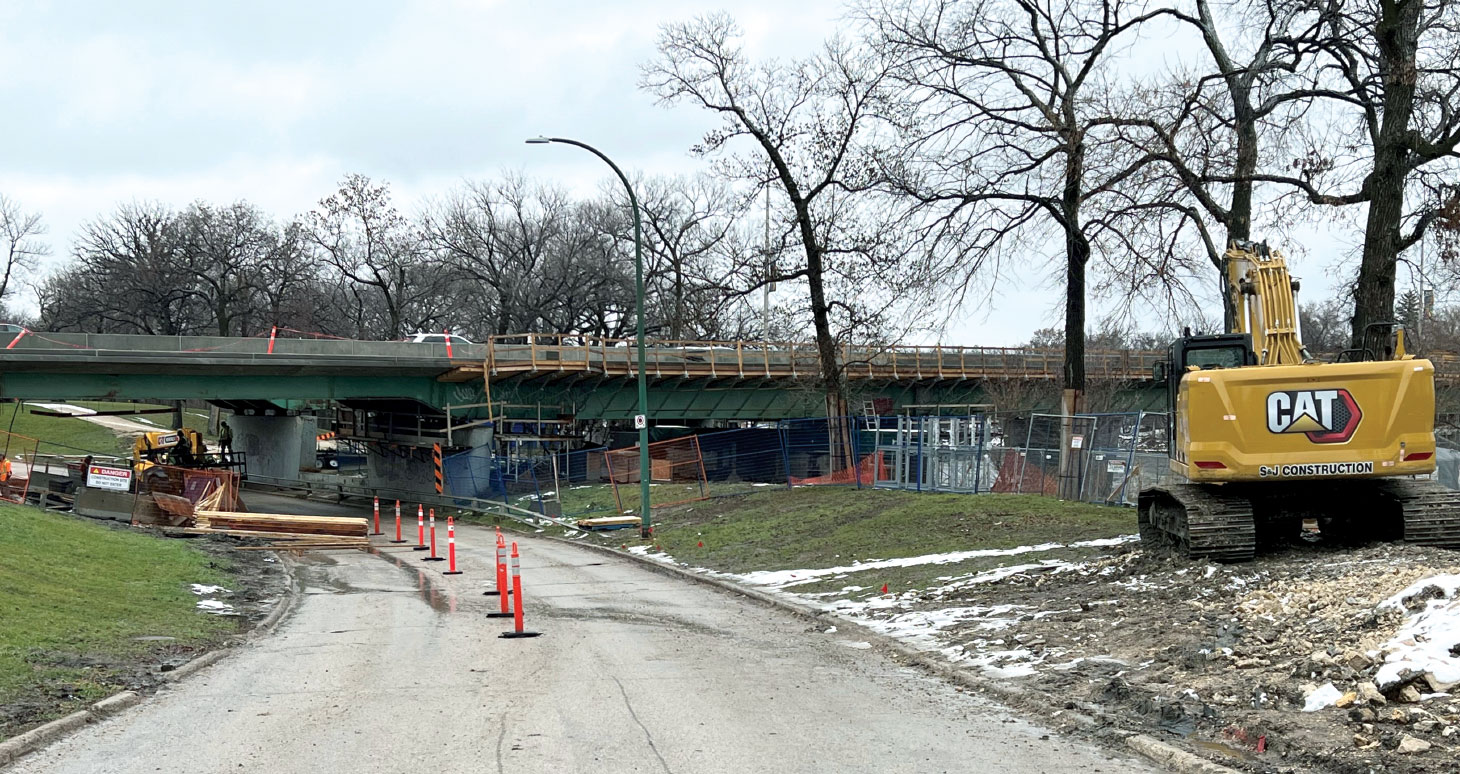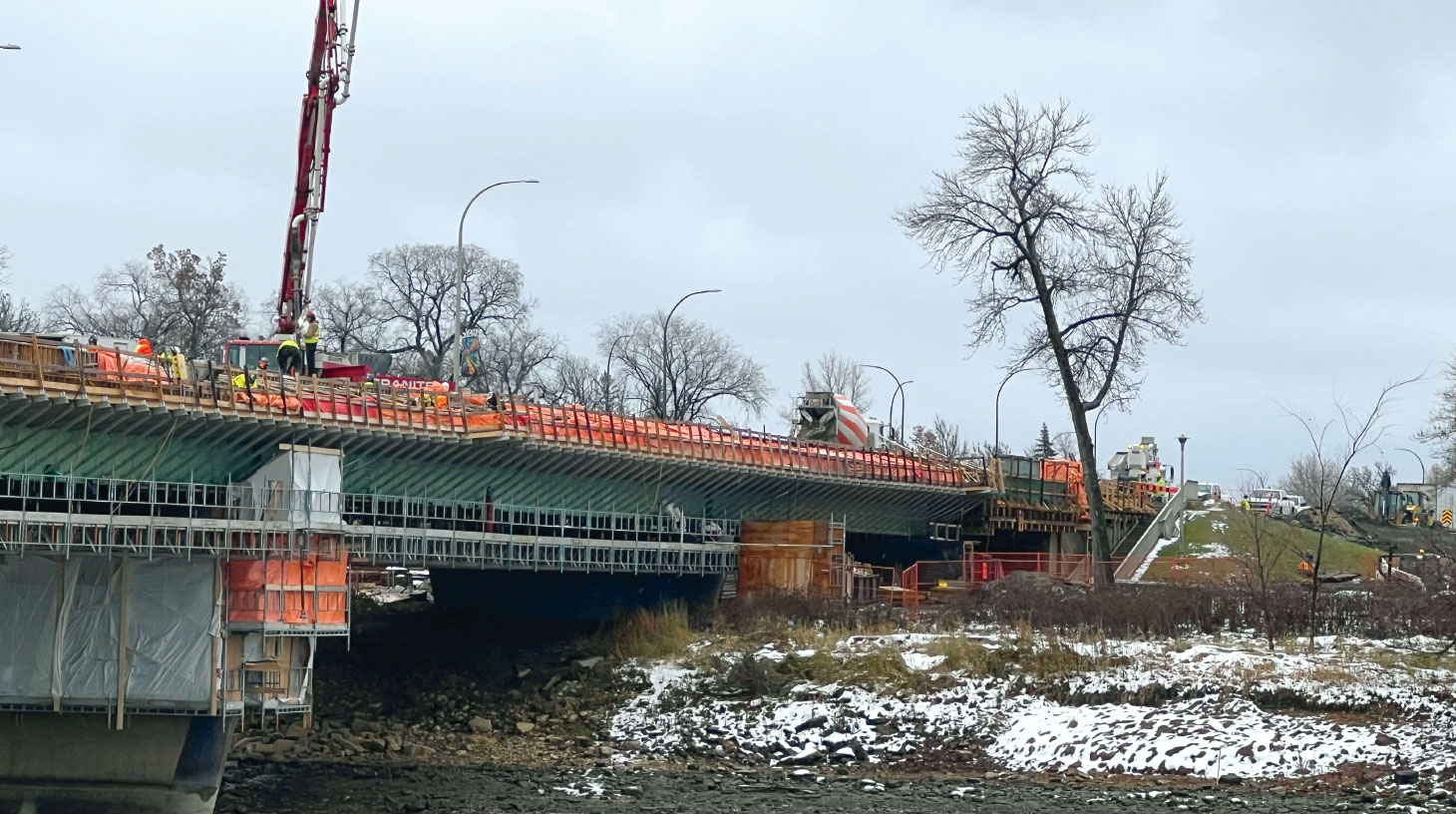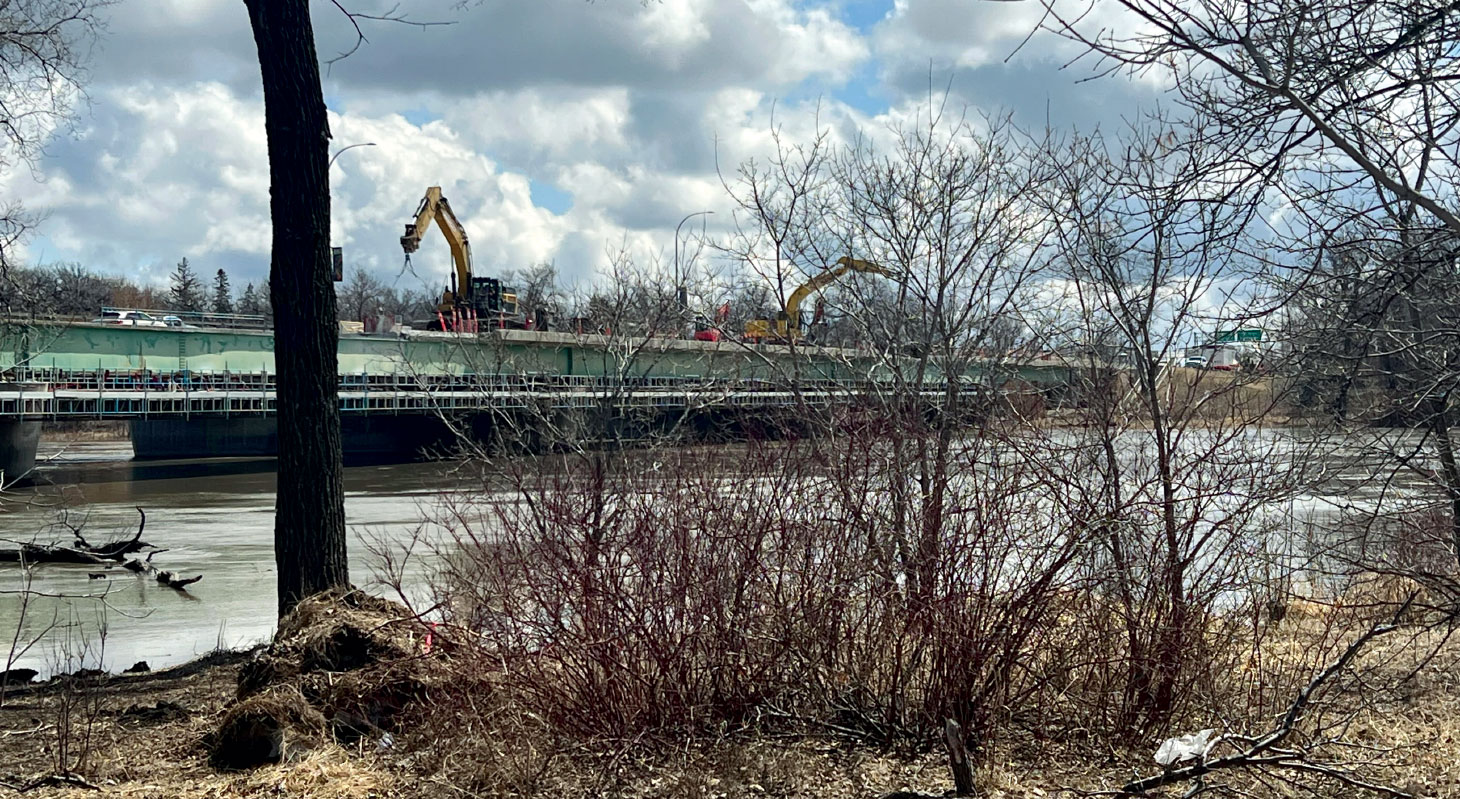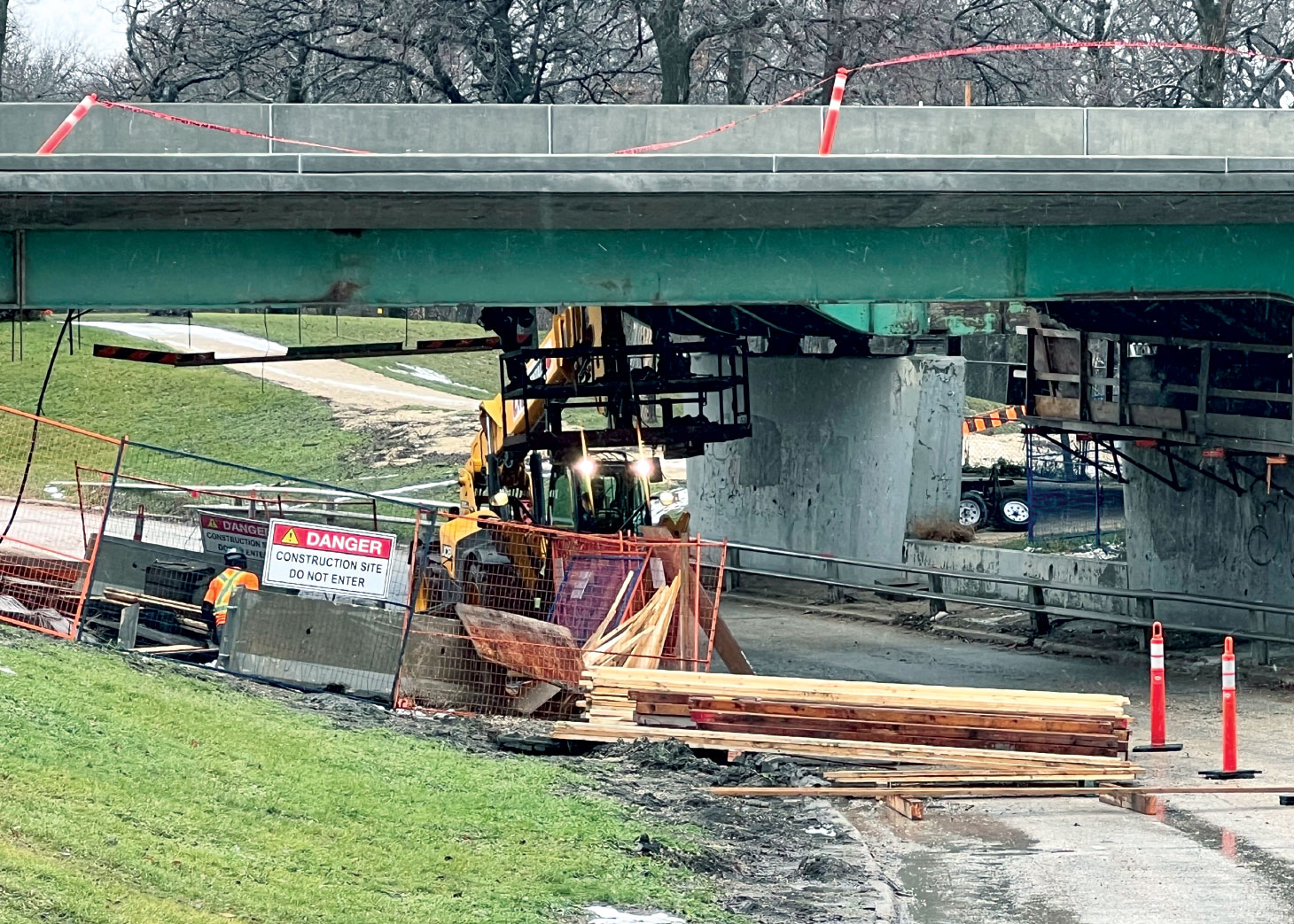
Canadians have become quite familiar with what’s known as the “construction season” in this country – that time of year when cities take advantage of the warmer temperatures and longer days of summer to complete as many infrastructure projects as possible.
However, for some commuters in Winnipeg, Man., a recent bridge rehabilitation project is now getting them used to the idea of a “construction year” (or two).
The St. Vital Bridge, comprised of two two-lane bridges spanning the historic Red River, first opened in late-1965, connecting the municipality of St. Vital to the city’s downtown. The two bridges connect Winnipeg’s Dunkirk Drive in St. Vital to the south with Osborne Street in Fort Rouge to the north, and have been an important part of helping the surrounding area grow and evolve.
After more than 50 years, the twin St. Vital bridges were starting to show their age and needed some serious TLC. The last rehabilitation of the structure was done in 1988.
“The reason for this rehabilitation project was the state of both the bridge deck and the driving surface,” said City of Winnipeg project manager and bridge project engineer Damir Muhurdarevic. “Anyone who has driven over the bridges over the last couple of years would think the bridge looked almost like a checkerboard because of all the repairs over the years. It was just in terrible condition.”

In 2021, the City of Winnipeg conducted an extensive bridge condition assessment, which concluded that it was time for a partial or full deck replacement of both bridges. The City also assessed the nearby road conditions and determined that the streets on both sides of the bridge also needed major or minor rehabilitation. To save on schedule and budget, it made sense to repair the roads in conjunction with the bridge repairs and kill two birds with one stone.
“While this is being called a rehabilitation project, it’s really a significant multi-disciplinary project that includes the rehabilitation of the twin bridges’ superstructure, as well as the rehabilitation of the north and south sides of St. Vital Bridge, and the creation of new multi-use pathways and riverbank stabilization,” said Muhurdarevic.
M.D. Steele Construction was selected as the general contractor, and with construction beginning in March 2023, the scope of the approximately $60 million project will completely replace the concrete bridge decks, strengthen the steel girders, remediate the foundation, stabilize the riverbank and widen the bridge decks.
“It’s really a significant multi-disciplinary project that includes the rehabilitation of the twin bridges’ superstructure, as well as the rehabilitation of the north and south sides of St. Vital Bridge and the creation of new multi-use pathways and riverbank stabilization.”
Damir Muhurdarevic, City of Winnipeg
The project also significantly improves the active transportation network and brings 1,450 metres of new multi-use pathways and sidewalks to the community, enhancing the pedestrian and cycling connections and experience. When complete, the bicycle traffic will stop contending with cars in the shoulder lane and will pass north and south on both sides of the bridge without obstruction.
The west deck of the bridge was expected to be closed until November, with traffic limited to one lane in each direction. Bridge construction then switched to the east side until October 2024. The landscaping phase is expected to be complete by June 2025.
Keeping it green
Throughout the project’s design phases, the project team communicated constantly with the City of Winnipeg’s urban forestry department to ensure that the bridge rehabilitation would have minimal impact on the surrounding greenery. While approximately 50 trees were removed to accommodate the work on the bridge, once construction is complete, the landscaping program will plant 400 new trees and shrubs in and around the neighbourhood.
During the demolition of the existing bridge deck, the project team also created an environmental containment plan to keep all demolished materials out of the river ecosystem.

“Because the work is taking place in the vicinity of and adjacent to the Red River, we had to submit an application to the Department of Fisheries and Oceans, as well as a self assessment of our procedures,” said Muhurdarevic. “The project received approval to go forward after the department determined that the project only had a negligible impact to the environment, and any negative impacts that might exist were offset by our plans for positive enhancements.”
Like all City of Winnipeg projects, safety has been kept top of mind throughout the bridge rehabilitation. As part of this, M.D. Steele submitted a safety plan before the work commenced and has two full-time safety inspectors on site to ensure this safety plan is being followed.
Shifting challenges
Muhurdarevic says there are always three major challenges with any project: the schedule, the cost and the quality of the work. “The challenge is to get all three aligned, and we are trying really hard to keep everything in line so we can re-open the road before the snow flies,” he said. “But there’s not a lot of flex to the schedule, particularly when something unforeseen comes up.”
This was the case along the north bank of the Red River. In May, the team discovered that a pier supporting both decks of the bridge had shifted about an inch since the initial 2021 assessment and – if left alone – it would end up overstressing the foundation.
“We had set up monitors on the riverbank and noticed that some significant horizontal movements had occurred at the bottom of the pier towards the river, and the amount of movement we observed was higher than what would be acceptable and required remediation,” said Muhurdarevic. “Because of this, the consultant was tasked to do an additional analysis to come up with a design solution on what to do to prevent further movement.”

The solution was to underpin the pier, which consisted of encapsulating the existing pile cap and increasing the size of the structure holding up the deck. This meant driving 28 new steel H-piles around the existing pile count and constructing a much larger pile cap. The new pile cap offers a much larger and more stable supporting structure for the piers.
The new pile design does not rely on the old pile cap to support the structure’s weight, and the new pile cap now carries the entire load. The structural connection between the two bridge decks was achieved by doweling into the existing pile cap and installing dowels to achieve another connection.
Construction on the new pile cap started in July, and the work was completed in early September, just before the deck pour. “In the end, we were delayed by about a week, which – in the grand scheme of things for a project this size – is not all that large, and we were able to get back on schedule and within our original budgeted price,” said Muhurdarevic. Metro Piling Ltd., from Headingley, Man., completed the piling works.
Looking ahead
When fully complete in 2025, this rehabilitation and landscaping project will add another 50 years to the St. Vital bridges’ lifespan, breathe new life into the existing structure and improve travel through the area for drivers, cyclists, pedestrians and transit users.
In addition to further improving the look and feel of the area, the City of Winnipeg is also incorporating a public art component into the project. It is currently working with the Winnipeg Arts Council to help shape an eventual art installation for the project zone. To do this, the council has established an art committee to develop ideas for what type of public art is most appropriate in this location.
“We now have a set of recommendations that came out of this process, and by the end of the year, the Winnipeg Arts Council will publish a call for artists to submit their art for competition. We ultimately want this project to be more than a route to traverse and instead become a destination that people want to see,” said Muhurdarevic.